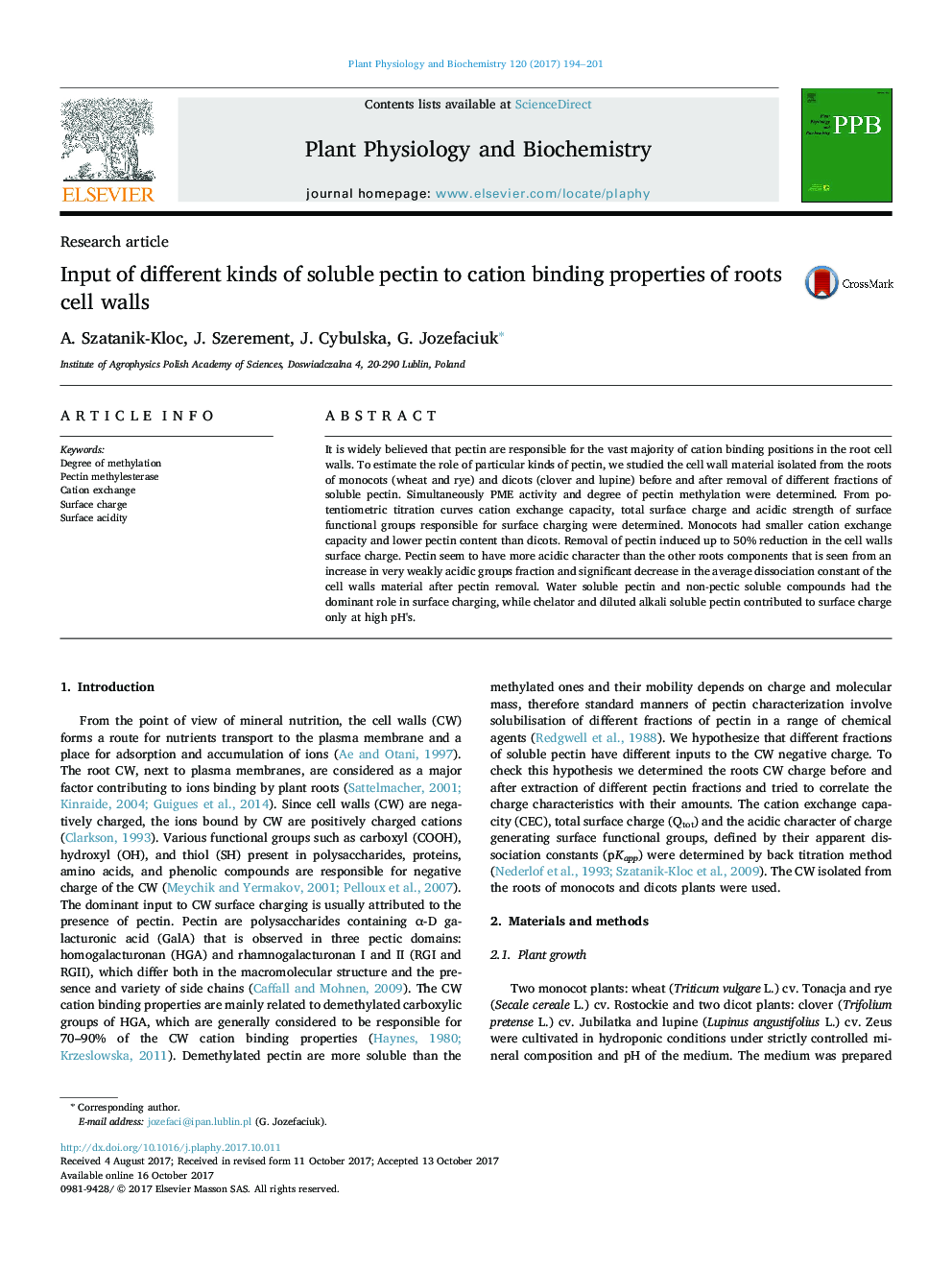| Article ID | Journal | Published Year | Pages | File Type |
|---|---|---|---|---|
| 5515280 | Plant Physiology and Biochemistry | 2017 | 8 Pages |
â¢Removal of pectins significantly reduces surface charge and acidity.â¢Water soluble pectins dominate in cation binding by cell walls.â¢Non-pectic soluble species have great effect on surface charge.â¢Chelator and diluted alkali soluble pectins have small input to surface charge.
It is widely believed that pectin are responsible for the vast majority of cation binding positions in the root cell walls. To estimate the role of particular kinds of pectin, we studied the cell wall material isolated from the roots of monocots (wheat and rye) and dicots (clover and lupine) before and after removal of different fractions of soluble pectin. Simultaneously PME activity and degree of pectin methylation were determined. From potentiometric titration curves cation exchange capacity, total surface charge and acidic strength of surface functional groups responsible for surface charging were determined. Monocots had smaller cation exchange capacity and lower pectin content than dicots. Removal of pectin induced up to 50% reduction in the cell walls surface charge. Pectin seem to have more acidic character than the other roots components that is seen from an increase in very weakly acidic groups fraction and significant decrease in the average dissociation constant of the cell walls material after pectin removal. Water soluble pectin and non-pectic soluble compounds had the dominant role in surface charging, while chelator and diluted alkali soluble pectin contributed to surface charge only at high pH's.
